Since I try to tell stories of people of every place I visit, and human stories are deeply intertwined with cultural nuances, it would be injustice to the series of my Morocco Travel Blogs if I do not mention the cultural exploration I was fortunate to experience in that land.
Morocco, the land of Mint Tea and Caravan route. The mystical expanse of Sahara Desert. The drums. The arid rocks that unfold the birth of Gondwanaland, with fossils and what not.
Morocco is a lot about the souks and snake charmer, but Morocco is also about the land of ancient Universities, the route of human civilization that transcends the deadly sandstorm of Sahara to reach Mediterranean coastline from the depth of Central Africa, and a definitive story of cultural assimilation of Sub Saharan Africa. The story of the conquest of Maghreb.
In the process, various communities have influenced one another, staging a beautiful amalgamation of distinct cultural practices, a joy to experience each layer of it.
We traveled in Morocco for couple of weeks, and while being on the road, I explored various cultural layers of this country. This blog is an ode to those joyful discovery along the road, most of which came to light as I explored the Caravan route, some along the old cities.
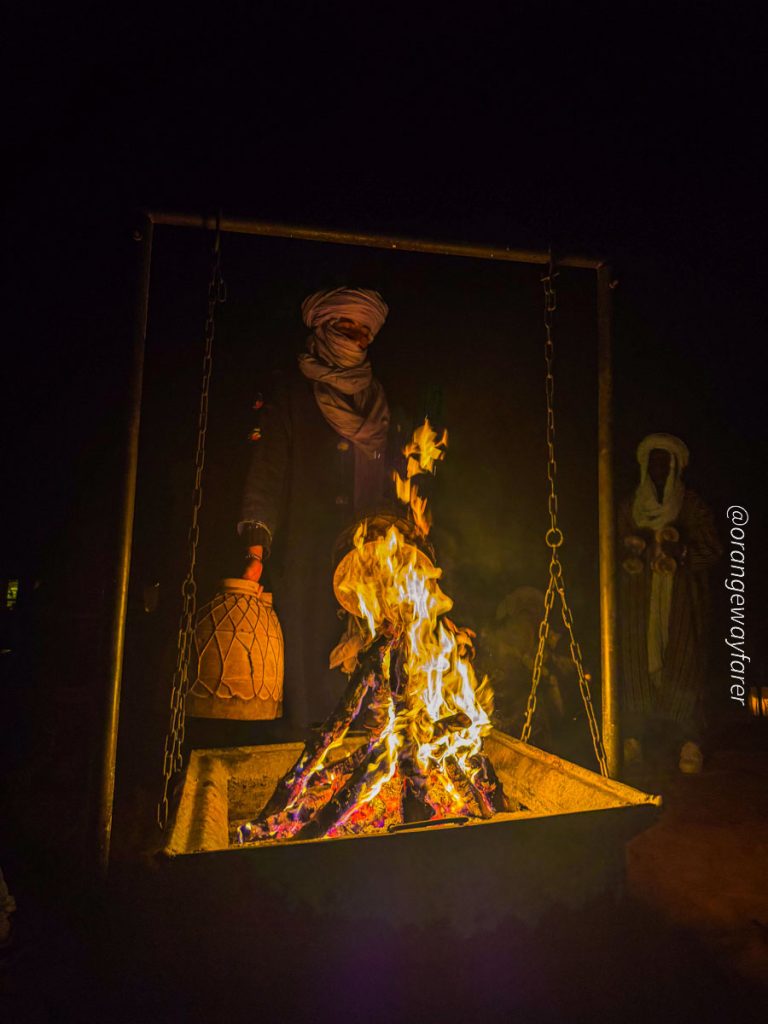
Understanding the Amazigh Tribe (also known as Berber community)
A major Cultural experience in Morocco is to experience the hospitality of the Berber tribe. It took me a while to understand the word “Berber” is used in a condescending way, although our guide did not say anything of those sort.
But I looked up, and I found the right word is Amazigh.
The conquest of Maghreb (West) brought the Arabs down the coast of Morocco. Along came Islam. While the Arabs and the Berbers frequently engaged in bloodshed, each community started to assimilate with the rule of the land.
The Amazigh community lives further towards the Atlas mountain. they have a distinct language, which as the driver-guide suggested, sounds like two people quarreling. I did not find it quarrelsome though.
Their tattooed face to commemorate life events, almost 3000 years old Yennayer agricultural new year celebration in January, practicing poetry and music in a way to remember ancestral heritage, the indigo turban caravan dwellers in the interiors of Sahara, elaborate silver jewelry, there was so much to experience in the Amazigh tribe. In a striking contrast to the Arabic culture, the native community have dwelled in Morocco for years, and make up for the lion’s share of cultural influence.
You may come across some of it while exploring the Jemaa el-Fna square in Marrakesh, if you do not have the time to explore Sahara desert at length.
Few Amazigh group come and perform at the square every evening. Crowds gather and cheer for them. Not just tourists, but a lot of locals too. Despite Marrakesh Jemaa el-Fna being a hotbed for tourist scams, I recommend you witness a few of these performances, because it is central to the whole experience of Morocco.
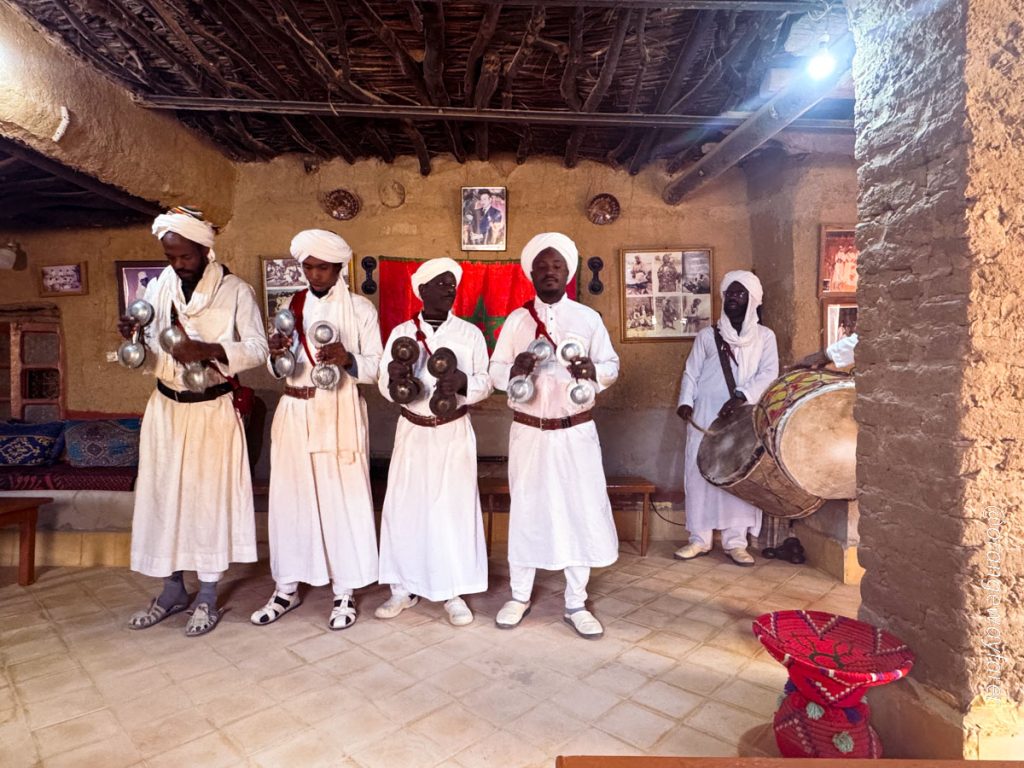
Mint tea infused Moroccan Hospitality
The art of pouring ataï (mint tea), high and slow, is a gesture of hospitality.
As soon as we checked into our Riad stay in Marrakesh, we were presented with a hot cup of Mint Tea.
They call it whiskey. It’s the comfort drink for the entire nation.
From north to south, from the dusty cities to rippling dunes, if there is one universal drink that binds Moroccans, that is Ming tea.
The serving of mint tea is a sight to behold.
They take the glass far away from the brewing pot, and bring it down swiftly while the liquid is still at a stretch. Then take it away again and make the most of brewing tea.
A sweet concoction of tea and leaves and hospitality, Moroccan mint tea was the base of the conversation everywhere we visited, from the roadside breakfast at Todra George to the swank cafe of Fes five star hotels.
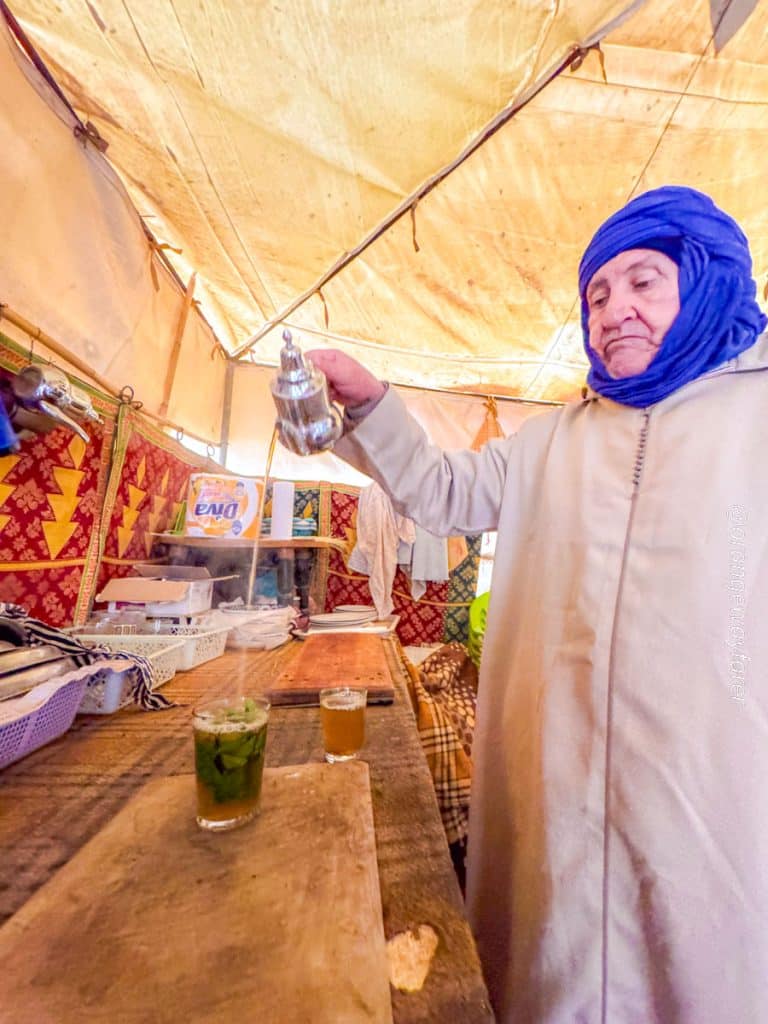
The wood workshop in Fes
I had a vague idea about Fes Medina, however I had no idea that Fes still houses the ancient art of woodwork. Fes is home to a bunch of other old school small scale manufacturing units (read metalsmiths).
We discovered the wood workshop street by serendipity! A man was working on a piece of art, which I later learnt is known as Moucharabieh, an oriel window, heavily used in Islamic art, and also part of Jaipur architecture in India.
It was expensive, but I had my heart set on it and I roamed around Fes Medina for a while, but figured my way back through that Labyrinth and purchased the wooden screen at the end of the day!
Fes is home to Nejjarine Museum, a Riad turned into a museum displaying the rich wood curving tradition of Fes.

The ancient Medina of the Moroccan Cities
Every Moroccan city has a medina at its heart that kind of pulsates the rhythm of everyday life in Morocco.
I had witnessed the medina of Fes, Marrakesh, Chefchaouen and Casablanca. All of them are touristy, and are designed in a way to cater to the tourists.
Yet, there are moments you will find a few silent corners for the locals. Authentic and medieval. A distant place from the Instagram screen. The way sunrays play in the morning. A lone orange tree. A severed head of a springbuck for sel. The henna artist wrapped in a Burqa. Political slogans claiming free Palestine. AN Mbappe jersey. A man closing the door of his souk at the end of the day. A drunk man creating ruckus at the end of the alley.
Medina goes on about life. Not in a pretty way, but in a regular way. I spent days walking around the Medina and I loved all of it! The best people watching experience in Morocco.
Crossing the High Atlas Mountain
The day we crossed the High Atlas, it snowed in Sahara.
One of the most bizarre experiences you could expect enroute Sahara.
With that, I realized how rainfall and snowmelt in the region have historically controlled movement of the oldest tribesmen of the country.
While Morocco’s coastal plains had seen invaders and colonists, the Atlas has historically safeguarded its communities.
Here, nomadic people still make makeshift houses, and move seasonally with their herds of goats for the search of water, and greener pastures. Terraced barley fields and olive groves declare ow deeply ingrained the land is to its people.
They seek refuge to the spirit of the mountain peaks, dotted with the shrines off holy men and ancestors. A seamless blend of native animism and Islamic faith.
A mountain makes huge difference between the people of the same country, in terms of cultural practices. Atlas is no different.
We were discussing about Ibn e Battuta with Mouchine (the driver guide with whom we had spoken volume about India, life in the US, and travel related business opportunity in Morocco). I played the Bollywood song on his name and he was the happiest guy. We chased sunset through Dades Valley, Todra George and retied at Sultan Ksar for the night.
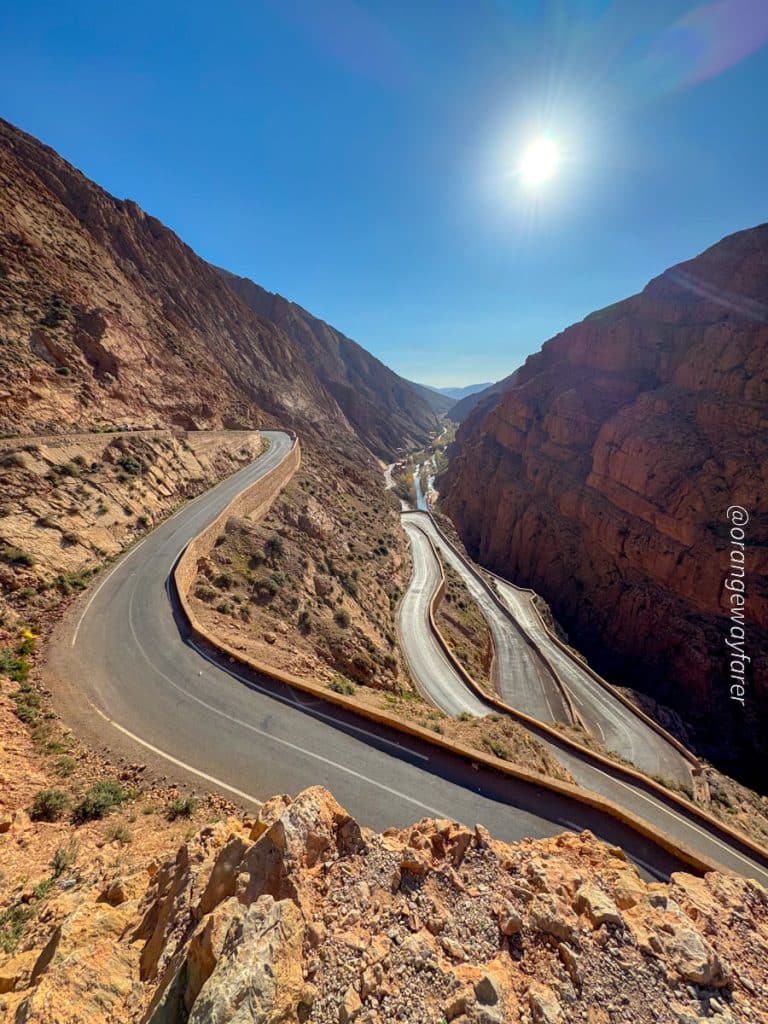
Berber Omelet
On a Tagine pot, the server brought sizzling fish, made with eggs. The most perfectly runny eggs I have ever eaten in my life, with a generous sprinkle of spices. The earthen pot kept it warm.
Mouchine the driver stated it’s his favour kind of Omelette. Well, a few days before he had shown me a monitor like reptile and stated he loves it when his mother cooks it with chilli. I don’t think Mouchine’s food preference aligns with mine!
But the Berber omelet, I loved. It came as a refreshing change after three long days meals of lamb and couscous.
The ancient Kasbah (fortified mud forts) of the Desert
If you have seen the mud forts of Timbuktu, and longed to visit the hinterlands of Mali, you can instead visit the Caravan Route of Sahara Desert. Sahara Desert is a safe place to travel to.
Our first stop was the famed Kasbah Ait Benhaddou near Ouarzazate. It is a UNESCO heritage site.
I felt the UNESCO tag has saved it, else the Hollywood was ready to engulf it. A nearby airport helps the economy but could almost destroy the beautiful Kasbah, where a handful of people live till date. Their cows graze in the courtyard. Donkeys wait out. A gentle stream flows in the front, which swells up at the advent of rain.
It was in fact built by the slaves brought in from Timbuktu.
oftentimes, the Kasbah of Sahara were trade stops for the Caravans that brought gold, salt and slaves from the central African countries. It is ironic to think, that is how gold reserves of the central Africa was introduced to the “West” who went on to bring misery in the region. Much of the central African republics are off limit to usual tourists due to safety concern, for the greed of natural resources has no limit.
We stopped by at Kasbah Amirdil as well, part of it converted into a hotel, partly owned by the original family. A section of the Kasba was open to tourists in exchange of a small fee. We spent an hour hear, exploring old ways of eating, cleaning, hosting guests. The rooms where they read Quran. The room with 5 windows representing 5 pillar of Islam. the women’s room. the hammam.
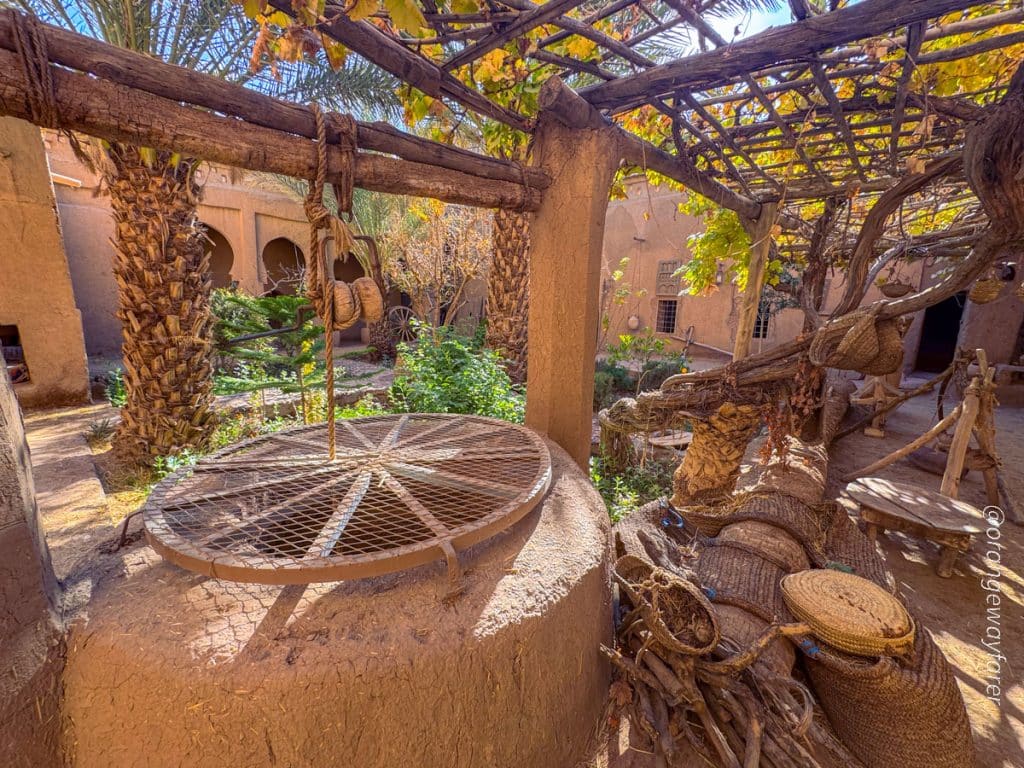
A Date farm producing the Mejdool dates
We came across a lot of agricultural land (to our surprise) on our route to Sahara.
Some of them were thriving date farms.
Erfoud at Draa valley is an Oasis city, and is famed for producing the sweetest dates of the country. In October, Erhoud hosts the famed Date festival in the region. Here you can witness the Mejdool dates.
It is a pity I spent most of the time sleeping in the car. Anyway, not much was happening there in November. I looked up later and found a few nice pictures of the date festival on the internet. Closest to it was what i experienced at Rissani market.
Dates are symbolic to the resilience of the region ,of the hospitality of Saharan people and more.
The Jewish Quarter of Morocco
Traditionally, the Jewish quarters are called Mellah in Morocco, and Pastilla, te pastry with sweet almond filling came with the Jewish people as they fled Spain and Portugal in the 15th century.
Although Morocco does not have a very big Jewish population anymore, it had opened its door to the persecuted Jewish community at different chapters of history. Remnants of it could be found in Fes, Chefchaouen and even near Sahara.
Due to the ongoing war, we stood in silence in front of the Jewish quarter as they appeared along the route. We know a bit of history, or can always educate them. But history does not derive its course from moral standards.
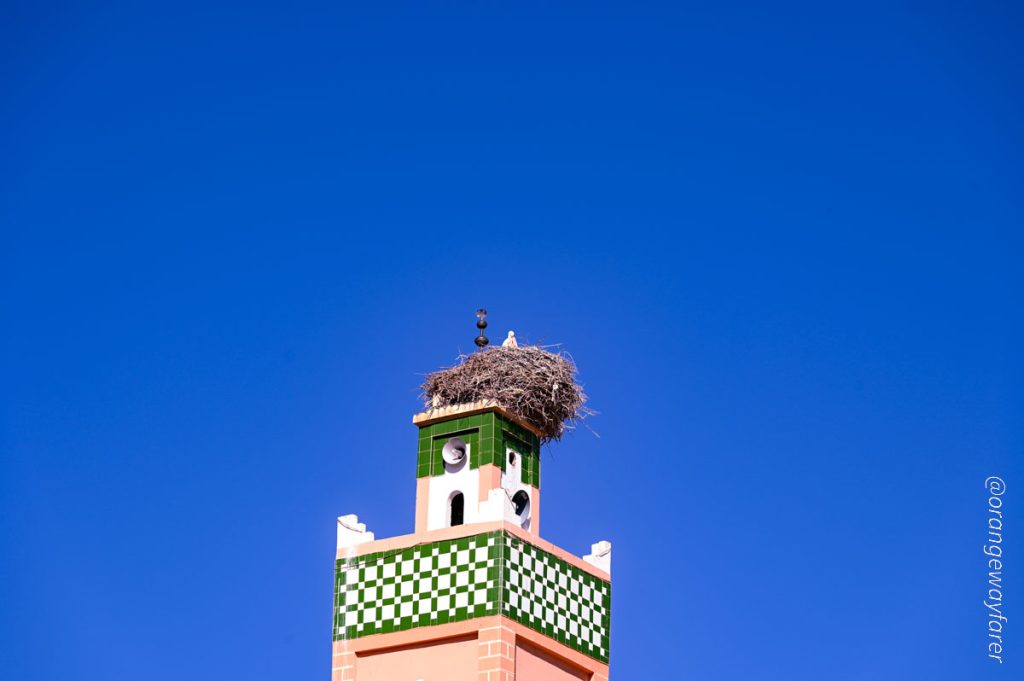
Experiencing a Hammam Bath
Once I had spent some time experiencing a great Ayurvedic massage at the Taj Madikeri Coorg, which I believed to be the best relaxing experience of my life, until I came across the Hammam experience of Sultan Dades Ksar.
The black soap, the exfoliation, the splash of warm water, tender touch at every pressure point- I could visit a Hammam every day I was at Sahara. My husband did it once again when he was at Fes. It really did strip away all the fatigued from our long journeys.
It was a lady who gave us Hammam treatment at Sultan Ksar. Both of us, in the same room. We sat on a marble slab. It was almost as elaborate as we had seen at the Bahia Palace.
Traditionally, Hammam has been a way to connect with the community, especially for women, where they gather and relax. I came home with a rhassoul clay mask, that the lady gave me at the end of Hammam. Oh, you are required to wear only a small underwear while entering the steam room.
Chasing the ghost caravans in Sahara Desert
I know it is a vague thing to say about Sahara desert, that it weaves the parts of Moroccan culture. I mean geography will definitely design the pulse of a community but what did Sahara do? Well spread across 9 countries at the helm of North Africa, Sahara desert is way bigger than the rippling dunes that appear from afar. The arid desert controls how people here breathe and eat, hence shape the distinct cultural norm of the land!
We spent good 4 days journeys to the Caravan route of Sahara desert, from Marakesh to Fes, on a private tour. This happened to be the highlight of my treat. All I knew about the dunes and nice pictures, however I came across a bunch of cultural experience which inspired me to write this blog.

The Rissani market- a local market in the desertland
Rissani blew my mind! In a nutshell Rissani market is where I saw the living and breathing side of Morocco. One of the oldest and largest market of the region, Rissani stood nonchalant at the handful of tourist cars that parked at along the donkey parking lot. You stop here on a Saturday or Sunday, as you make way from Sahara desert to Fes (or Marakesh).
A local market serving as a central nucleus of the nearby villages Rissani has spices, fish, animal market, meat and everyday regular things on display. A few tea shops where round warm bread is served to locals who sit and sip on the tea, and wait it out.
It is the best place for People watching. You will see how Morocco has been a crossroad of different ethnic groups of the region, starting from Spain (Basque region specifically), to many places in central Africa. Of course the conflict and conglomerates of Arabs and Amazigh who shape the lions share of the society. Most of the products traded here are locally sourced, with a few exceptions where the Chinese dragon has claimed control (read plastics).
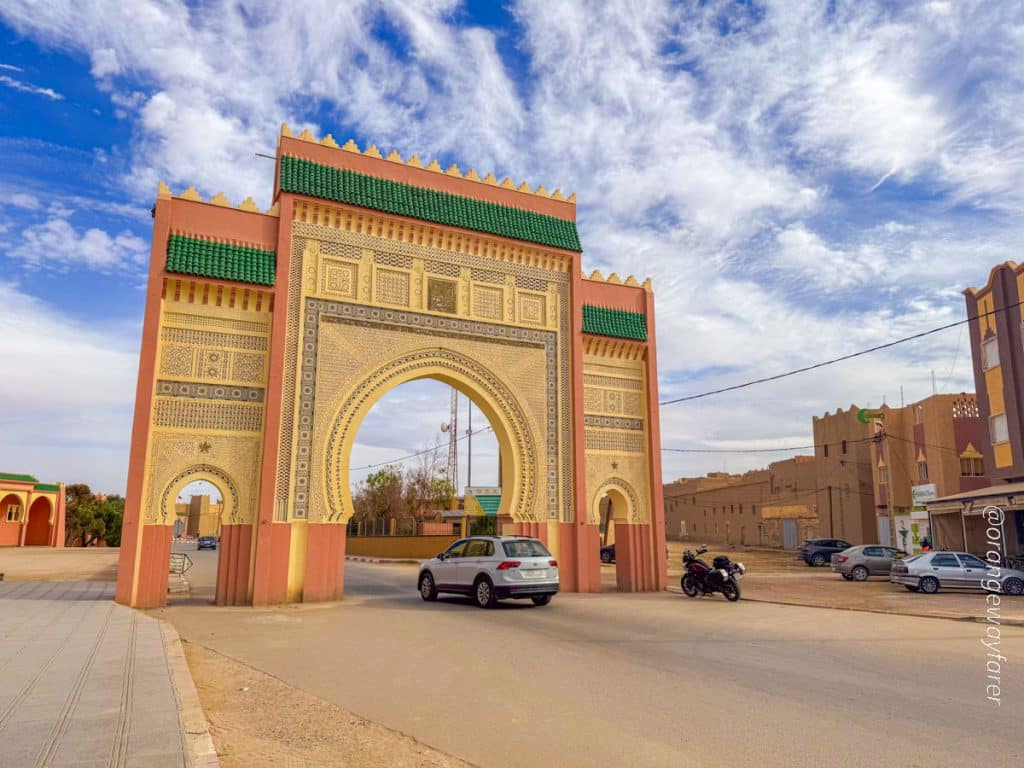
The toil of a Tannery
The tannery at Fes will evoke mixed emotion, especially if you go beyond the Instagram special capture from the rooftops. At one hand, the tanneries are standing through the gnaw of time, like the walled cities(Medina) & its customs and madrasa, and university.
On the other hand, they have employed labors at minimal wage and provided Shanty town quarters since time millennia. Most of the labors at the tannery come from the deep of Africa, often neighboring countries. As a tourist for few weeks, I feel entitled to comment on this, but the double standard of Moroccan society came as a shocker.
I could sense it as I come from a country with deeply ingrained prejudice and an exploitery class system against the underprivileged class. It was ugly to show case those tanneries without acknowledging the exploiting nature of work it brings to the workers.
But then Fes is a magical place. Steeped deep in history, Fes remains a few light years away from the glitz and glam of modern cities. It is a well rounded look at the living history of Morocco. And these tanneries are huge part of it. So are the artisans from different walks of life of life, the pottery, the wood cutters, the metal smith!
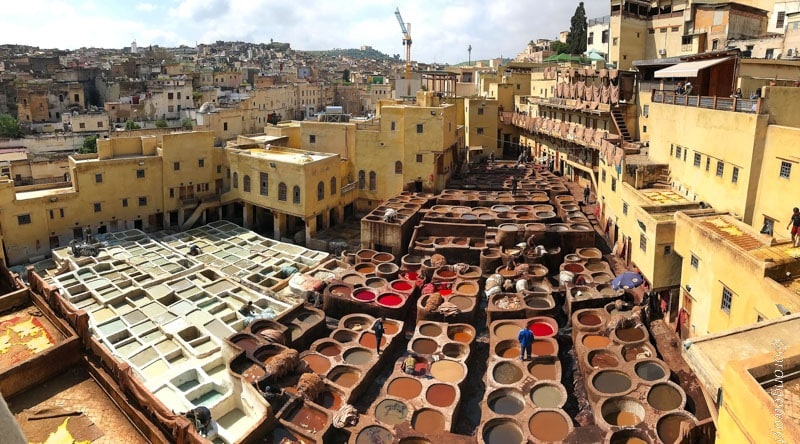
Tale of Nomadic Carpet
It is a pity that selling a carpet has been reduced to a scam activity in the Moroccan tourist circuit. The tourist pack bus will definitely stop in front of one of the carpet shop. The seller will greet you with tea, and show you a bunch of stupendously expensive pile of intricate mats.
But you need to ask will they take you for a fly ride across the desert dunes?
I found a bunch of women sitting at a cooperative and selling carpet near Aït Benhaddou. Well, it’s one of the most frequented tourist places near Marrakesh. It would be a hotspot for carpet sellers. So I sit back and sip on the tea.
We had been assured by the tour operator that there is no pressure to buy any carpet. So I see each one and seek the story behind.
The Moroccan carpets lack the grandeur of ottoman’s counterpart you see in Turkey. If I have to draw a comparison, they may seem to be distant sibling to Kutch of Gujarat, if not Kashmiri handcrafts.
The nomads weave a carpet and pass it through generations, mostly through their daughters. Their carpets are befitting the round chalets that are scattered around lower Atlas region. They weave camels and donkeys on these rugs (also known as Zerbiya in Amazigh language).
These rugs are nowhere perfect. They are faded, frayed and mostly of neutral shade.
While I have been told multiple times that women’s co op is a scam, I can not help remember the girls who showed me these rugs and shared the stories associated. I could make the difference between the rugs tracing their roots back to the rustic remote corners and to the ones created to please the eyes of tourists in big cities.
You buy them or not, you can always see them, unless they put extra pressure on you to purchase. And that itself is an experience.
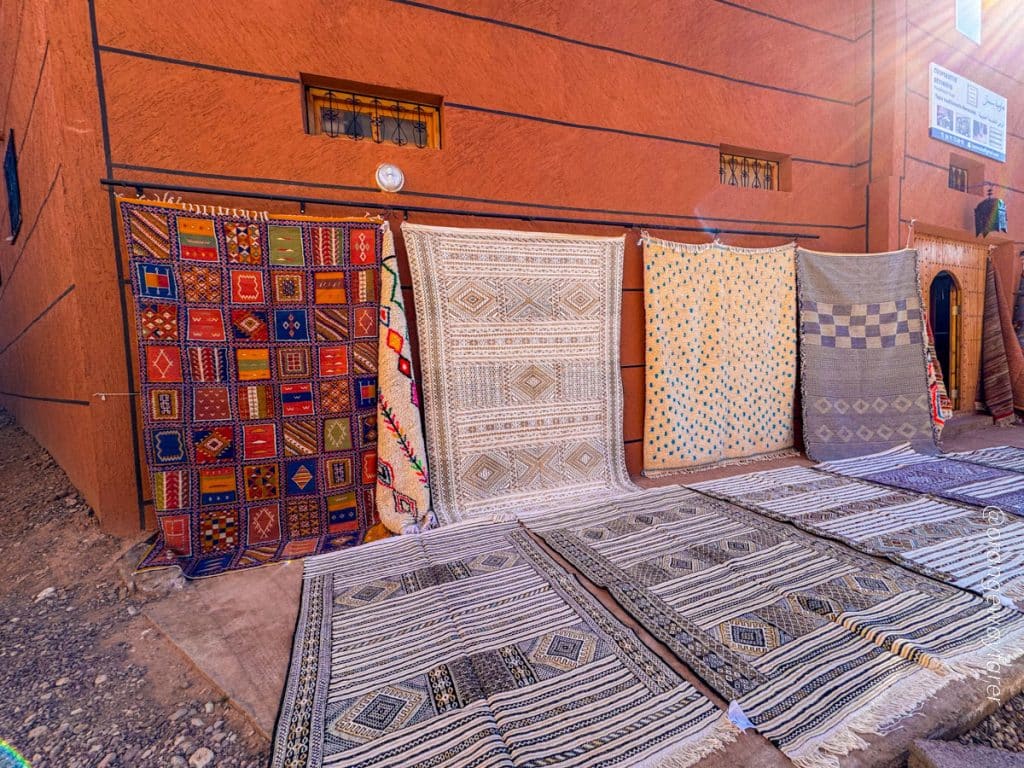
Also read: Practical tips to visiting Morocco
While Sahara was the first time I experienced a desert in its prime, and La Capitano was the film that inspired me to do it, I was pleasantly surprised to explore the layers of Moroccan culture, that very few people actually talk about. Yes, it is hospitable. In its rough, barren, arid landscape, it is strikes a contrast with warm hospitality and kind gestures.
The country is run by a monarchy, a monarchy heavily agreeing with whatever European Union demands. An African country that speaks French. A country that is heavily reliant on tourist influx. Youth mainly engaged in tourism related job, or finding a way to go out of the country, using lottery or a flimsy dingey.
I left a piece of my heart in Morocco, as I do every time I visit an African country. And it surprises me, in its genuine kind self, in contrary to what Hollywood brainwashed me to believe. Or is it my experience as a brown women, which is different than that of a white person and her perceived notion of safety? These are the question I ask myself after living in the US for 4 years and traveling with an Indian passport.
________________________________________
Let’s stay connected on Facebook, Instagram, Twitter, Youtube!
This post may contain affiliate links. Please read the disclosure post. If you have liked the article, you may support it by buying using these links without any extra cost to you.